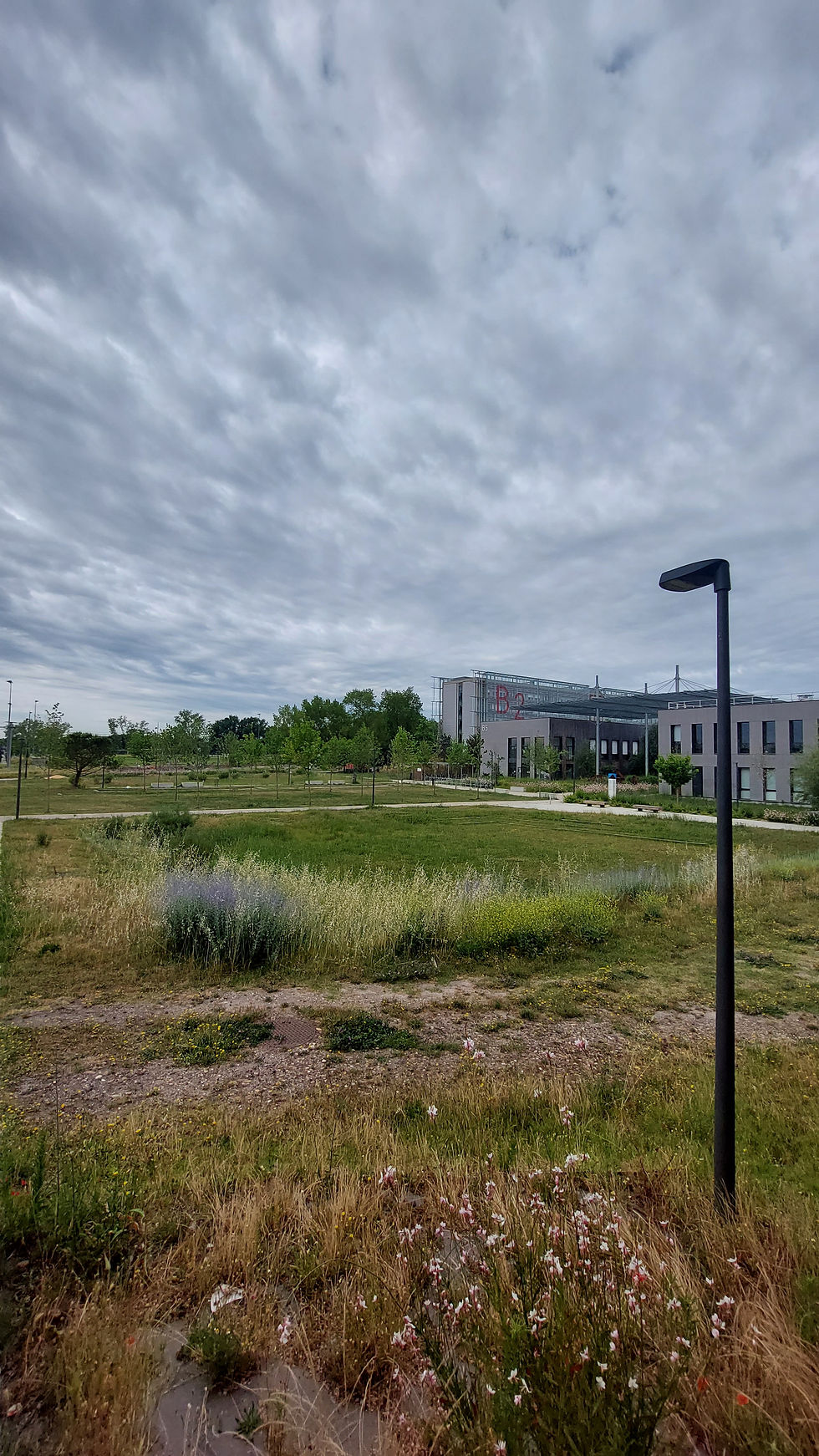Geo-metric-morpho-what now?
- Aimee Welmans

- Aug 2, 2022
- 4 min read
If the term 'geometric morphometrics' isn't a mouthful for you to say, then you're probably a lot better at linguistics and anatomy than I am. The Stellenbosch University (SU) Bakeng team had the privilege of being taught a thing or two about the latter mentioned topic while on our most recent mobility to the University of Bordeaux in France, and we would like to share some of it with you.

From the 26th of June till the 2nd of July 2022, the SU Bakeng team visited Bakeng partners of the PACEA laboratory situated at the University of Bordeaux. We had the privilege of learning from Dr Yann Heuzé, who gave us several lectures during our time there. The central theme of these lectures pertained to geometric morphometrics, as well as how to use imaging softwares and interpret results obtained with geometric morphometric related research data.
Personally, I am a newbie to the field of postgraduate anatomy studies (having not completed an honours degree in anatomy), so I was pretty lost when all these new "big scientific terms" were thrown my way. As the person reading this, you may know a lot more than me on this subject, but I thought for those on the same page as myself I may dedicate a blog post to help us better understand these concepts.
Yoland Savriama from the University of Finland (2018) described geometric morphometrics as "a collection of approaches that provide a mathematical description of biological forms according to their geometric definitions of their size and shape". Now to simplify this a bit, geometric morphometric allows to assess morphology and shape while eliminating scale and size, but keeping the effect of size by working with ratios. Geometric morphometric data is derived from the 3D coordinates of homologous landmarks. The most common geometric morphometric analysis uses landmark points that are aligned with one another using Procrustes superimposition, which allows us to look at the effect of size on shape. Procrustes superimposition rotates, translates and scales the data so that they have the same orientation and size (Rohlf & Slice, 1990). Removing differences in orientation, position and size allows for the pure shape to be analysed.
Dr Heuzé took us through the workings of two key softwares commonly utilised for collecting data that can be analysed with geometric morphometrics: MorphoJ and Avizo. MorphoJ is a freely downloadable software that can work with either 2D or 3D data. Avizo works on the same principle as 3D Slicer, a 3D imaging program you may be more familiar with. Avizo is slightly more intricate than the latter as you have to go through a process of first looking at isosurfaces, setting a threshold value based on what material you wish to view (for example: bone and soft tissue will be viewed at different threshold values), segment your object, make a mesh of it and then putting your landmarks on either the mesh or isosurface depending on the object that you're working on.

On Day 1, we were guided through how to layout data in Avizo and how best to carry out landmarking. We just had some general chats on everyone's experience with the software (as a few members of our team were familiar with it).
In MorphoJ, Dr Heuzé first took us through how landmarking is visualised (first image on the right). MorphoJ creates a dataset by implementing a full Procrustes fit and producing a new set of shape variables that can be used for further analyses of shape variation or to relate it to other information (Dryden & Mardia, 1998).
We then went through a dataset comparing landmarks located on male and female skulls (second image on the right). Interestingly enough, using geometric morphometrics, we visualised minimal differences between the skulls of males and females (third image on the right). The latter data was interesting, or at least in my opinion, as it is always expected to see distinguishable, significant differences between sexes in any species.
We are so grateful for the knowledge transfer that took place during our visit to France and are extremely grateful that Dr Heuzé was willing to assist us in our understanding of geometric morphometrics. Although geometric morphometrics is nothing new in the field of anatomy, one of our take-home messages from these sessions was that it can still be a useful analysis tool to substantiate one's research, if used correctly. I'm sure that some of our future research studies at the University will encompass geometric morphometric analyses.
References:
Dryden, I.L. and Mardia, K.V. (1998) Statistical Shape Analysis. London: John Wiley. Available online: errata.pdf (sc.edu)
Rohlf, F.J. and Slice, D.E. (1990) Extensions of the Procrustes method for the optimal superimposition of landmarks. Systematic Zoology, 39: 40–59. Available online: Extensions of the Procrustes Method for the Optimal Superimposition of Landmarks on JSTOR
Savriama, Y. (2018) A Step-by-Step Guide for Geometric Morphometrics of Floral Symmetry. Frontiers Plant Science. Available online: Frontiers | A Step-by-Step Guide for Geometric Morphometrics of Floral Symmetry (frontiersin.org)
Aimee Welmans
Bakeng se Afrika Team
BARU (Biological Anthropology Research Unit)
Stellenbosch University















Comments